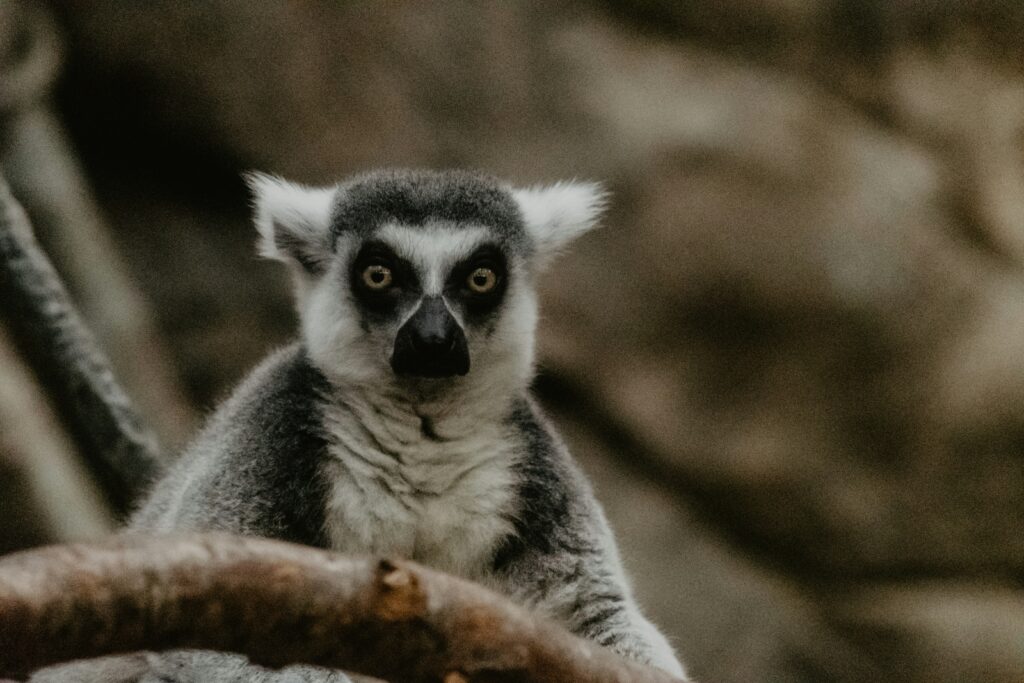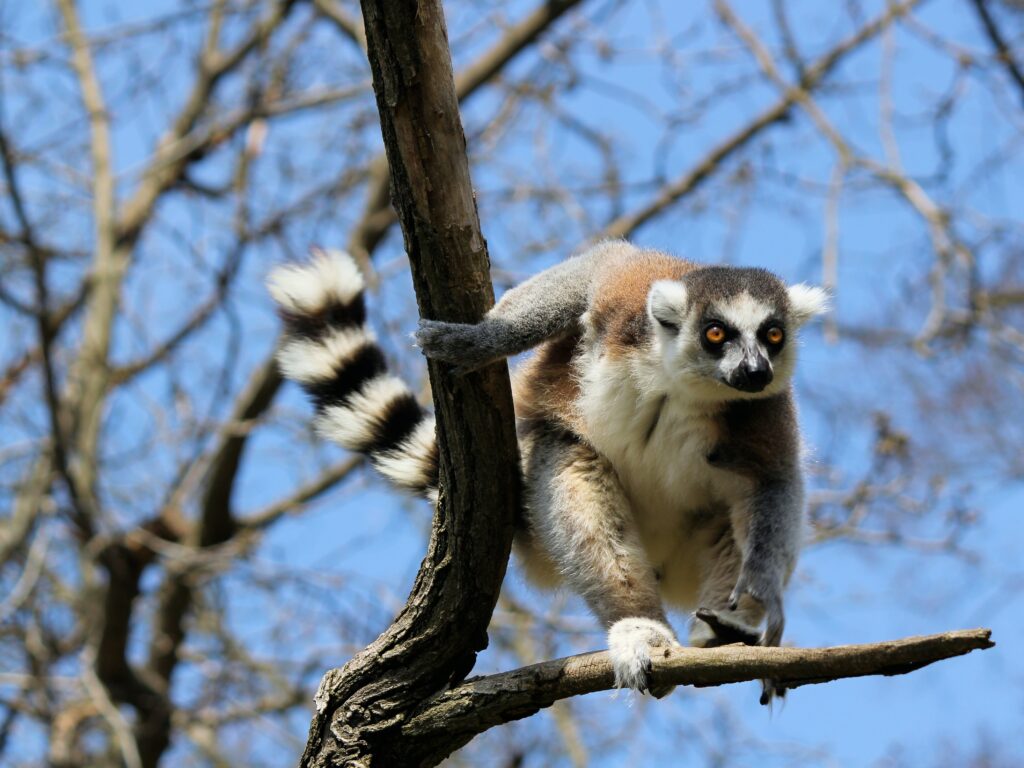lemur is an unusual group of primates known only from the island of Madagascar and a handful of nearby islands, including the Comoros. They are part of the larger order Primates, infraorder Lemuriformes. Variety of species found in lemurs, from mouse lemur to indri They are among the world’s most endangered mammals, threatened by habitat destruction, hunting and climate change. Lemurs with all their particulars—of evolution, of form and function, of social interaction, culture, geography, upkeep and survival.
Evolution and Classification
Lemurs are believed to have evolved from ancestral primates that rafted to Madagascar from Africa approximately 50-60 million years ago. Isolated on the island, they diversified into over 100 species and subspecies, filling various ecological niches. Lemurs are classified into five families:
- Cheirogaleidae (dwarf and mouse lemurs): Small, nocturnal lemurs.
- Lemuridae (true lemurs): Includes ring-tailed lemurs and brown lemurs.
- Lepilemuridae (sportive lemurs): Medium-sized, nocturnal lemurs.
- Indriidae (woolly lemurs, sifakas, and indri): Larger, diurnal lemurs.
- Daubentoniidae (aye-aye): A unique, nocturnal species with specialized traits.

Physical Characteristics
Lemurs exhibit a wide range of sizes and appearances, but they share some common traits:
- Size: The smallest lemur, the mouse lemur, weighs about 30 grams, while the largest, the indri, can weigh up to 9.5 kilograms.
- Fur: Most lemurs have thick, soft fur that varies in color, including gray, brown, black, white, and red.
- Eyes: They have large, forward-facing eyes adapted for nocturnal or diurnal vision.
- Tail: Many lemurs have long, bushy tails used for balance, communication, or as a fat storage reserve.
- Teeth: Lemurs have a unique dental comb, formed by their lower incisors and canines, used for grooming and feeding.
- Hands and Feet: They have opposable thumbs and toes, allowing them to grasp branches and manipulate objects.
Behavior and Social Structure
Lemurs exhibit a wide range of social behaviors, depending on the species:
- Social Groups: Some lemurs, like ring-tailed lemurs, live in large, matriarchal groups, while others, like the aye-aye, are solitary.
- Communication: Lemurs communicate through vocalizations, scent marking, and body language. For example, ring-tailed lemurs use loud calls to defend their territory.
- Activity Patterns: Lemurs can be nocturnal, diurnal, or cathemeral (active at irregular intervals). Nocturnal species, like mouse lemurs, are often solitary, while diurnal species, like sifakas, are more social.
- Grooming: Social grooming is common among group-living lemurs and helps strengthen social bonds.
Habitat and Distribution
Lemurs are found exclusively in Madagascar and a few nearby islands. They inhabit a variety of ecosystems, including:
- Rainforests: Home to species like the indri and sifaka.
- Dry Deciduous Forests: Habitat for ring-tailed lemurs and mouse lemurs.
- Spiny Forests: Found in southern Madagascar, inhabited by species like Verreaux’s sifaka.
- Montane Forests: Higher elevations where species like the golden bamboo lemur live.
Madagascar’s isolation has allowed lemurs to evolve in unique ways, but it also makes them highly vulnerable to environmental changes.
Diet
Lemurs are omnivorous, with diets varying by species and habitat:
- Frugivores: Many lemurs, like the black-and-white ruffed lemur, primarily eat fruit.
- Folivores: Species like the indri and sifaka consume leaves and vegetation.
- Insectivores: Mouse lemurs and the aye-aye feed on insects and small invertebrates.
- Gummivores: Some lemurs, like the fork-marked lemur, eat tree gum and sap.
Their diet often changes with the seasons, depending on food availability.
Reproduction and Lifespan
Lemurs have diverse reproductive strategies:
- Mating Systems: Some species are monogamous, while others are polygynous or promiscuous.
- Breeding Season: Many lemurs have a specific breeding season, often synchronized with the rainy season when food is abundant.
- Gestation: Gestation periods range from 60 days in mouse lemurs to 150 days in larger species.
- Offspring: Most lemurs give birth to one or two offspring, which are carried by the mother or left in nests.
- Lifespan: Lemurs typically live 15-20 years in the wild, though some species, like the aye-aye, can live up to 23 years.
Conservation Status
Lemurs are among the most threatened groups of mammals:
- Threats:
- Habitat Loss: Deforestation for agriculture, logging, and mining has destroyed much of their habitat.
- Hunting: Lemurs are hunted for bushmeat and the pet trade.
- Climate Change: Alters their habitats and food availability.
- Conservation Efforts:
- Protected areas and national parks have been established in Madagascar.
- Breeding programs and reintroduction efforts are underway for critically endangered species.
- International organizations, such as the IUCN and local NGOs, work to raise awareness and fund conservation projects.
As of 2023, over 90% of lemur species are classified as endangered or critically endangered.

Conclusion
Lemurs are a fascinating and diverse group of primates that play a vital role in Madagascar’s ecosystems. Their unique adaptations and behaviors make them a subject of great interest to scientists and conservationists. However, their survival is under severe threat due to human activities. Protecting lemurs and their habitats is essential not only for their survival but also for maintaining the ecological balance of Madagascar. Efforts to conserve lemurs must involve local communities, governments, and international organizations to ensure these remarkable primates continue to thrive for generations to come.

